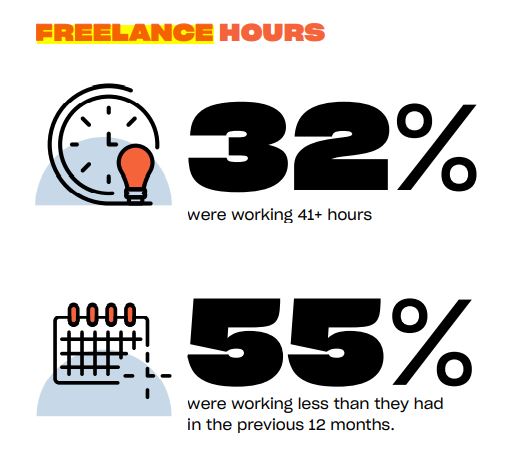Gender pay gap: female freelancers paid less per day than males, says survey
Despite the challenges the freelancer economy continues to face, such as the introduction of IR35 in April, there are signs that businesses are seeking to remain flexible with their hybrid staffing costs.
That’s good news for freelancers.
However, a survey report has revealed some eye-opening day rate disparities between men and women.

How wide is the freelancer gender pay gap in the UK?
The Major Players 2021 Salary Survey demonstrated that more women are entering the digital, marketing and creative industry than men which is highly encouraging.
They are also earning more than their male counterparts both at entry and mid-level. However, this trend declines when the salary band reaches £50,000+, with men 3 times more likely to earn upwards of £100,000.
On average, women earn £10,405 less than men in permanent roles and £44 less in freelance day rates.
As a result, on average, women earn £10,405 less than men in permanent roles and £44 less in freelance day rates. This is a disadvantage for single, same-sex and nuclear families where female freelancers are concerned as they could be bringing in thousands of pounds more each year and helping support the economy.
This is especially the case in the IT sector, according to Caroline Ramade, CEO of IT tech recruitment platform 50inTech. Ramade spoke previously with The Freelance Informer about the elephant in the room – the lack of institutionalised flexible and remote working in retaining women in the tech industry.
For many women, especially those in the time-sensitive and consuming tech sector, a lot of the demands of childcare and domestic duties fall on them even in a two-income household. Often, the responsibility has fallen on the woman in the partnership because their work is “less valued” highlighting how why gender pay equality is so out of whack.
The Institute for Fiscal Studies found that mothers who were in paid work prior to the first lockdown were 47% more likely than fathers to have permanently lost their job or to have quit since that point. Add to this that 14% of mothers were more likely to have been furloughed or had their hours cut by half and you strat to see a pattern of inequality.
Why are there still gender and racial pay gaps in 2021?
Pay gaps seem to “happen” for a variety of reasons. These reasons can include experience, education level, age, race and even location. There is a salary imprint from the permanent workplace that crosses over to the freelancer world.
Do men value their time more than women and charge accordingly?
It would seem men on average, feel less “cringey” when it comes to asking for a higher day rate with each new client or project. This is how they build their day rates over time and experience. Why? Society “values” their own time more, so men more naturally take into account how much extra time a similar project took them before and keep this in mind before accepting the very first rate or project fee they are offered.
They also often feel more pressure to provide for their families, especially if a partner is balancing a career alongside childcare. The females in families are also likely, as the survey has revealed, to not be taking home the same level of pay even if they work in the same industry as their male spouse or freelancer counterparts.
It’s a perpetual cycle that needs addressing. Salary surveys such as those conducted by Major Players are helping people to realise their full earning potential.
The pay gap will only perpetuate if women continue to start at a much lower day rate base rate than men or accept lower rates because they prefer flexible working to fit around family. If project to project or year to year women do not ask for a higher rate nor consider taking rising inflation into account, their rates will continue to lag behind their male counterparts.
If you are a female freelancer and now have the knowledge that you could be down as much as £44 a day, negotiate with your existing clients for a rate boost and most definitely negotiate it with any new clients. If they baulk, then negotiate a bit more. Have a response ready to back up why they should part this extra cash for your services. Are you already providing extra research, time or other value-added services and not charging for them?
Be fair, but be bold. But always remember: if you don’t ask, you don’t get.
How to ask for a rate rise




